
Shahrokh Moshkin Ghalam and Samani Brothers
Dance: Shahrokh Moshkin Ghalam; music: Behnam und Reza Samani Heilig-Kreuz-Kirche Berlin; September 5th, 2014
The tall dancer wearing a dress begins to spin. As he whirls faster and faster, his skirt raises and his pitch black, waste-long hair is swirling. The dancer raises both arms, still spinning, and then points the left art towards the ground while keeping the right arm up in a pose reminiscent of Dervish ritual whirling. Shahrokh Moshkin-Ghalam is an Iranian living in Paris. He graduated in history of art and theatre and became member of La Comédie Française and of the French National Theatre, where he works as a playwright, choreographer and dancer. He ist internationally renowned, performing with Royal Opera House/Covent Garden and in Stockholm, Toronto, and New York. His choreography is rooted in Persion tradition but he sought training in Indian, Indonesian and Japanese dance styles and blends their elements into his work, creating uniquely modern yet unmistakably Persian choreographies. His performances are usually accompanied by Persian music. In 2015, Shahrokh Moshkin Ghalam was awarded Nowruz Award for Performing Arts by Pasargad Heritage Foundation.
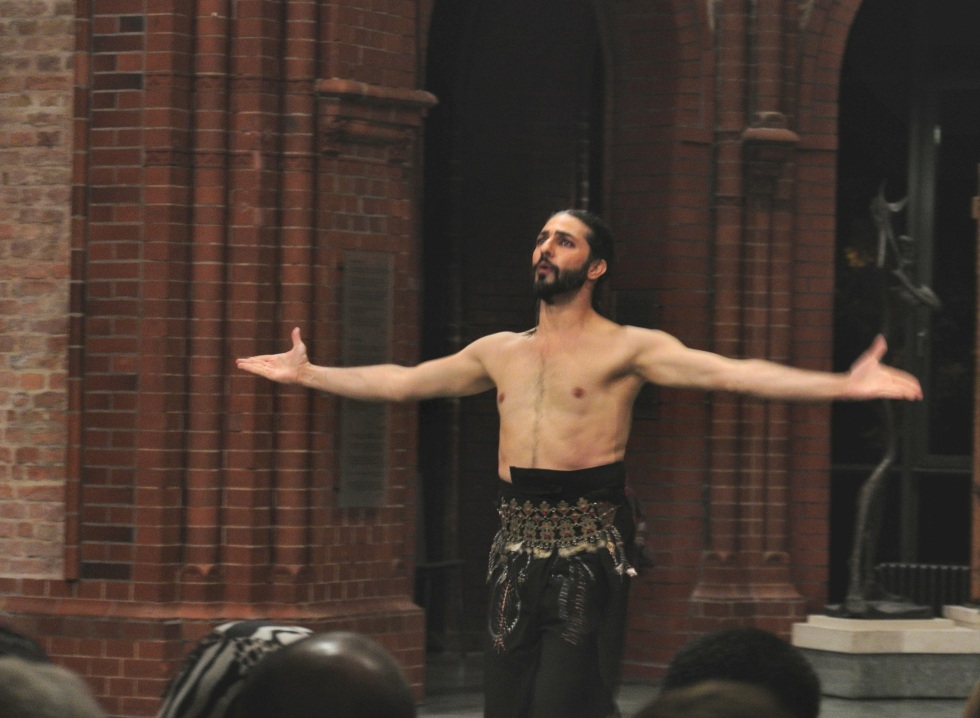
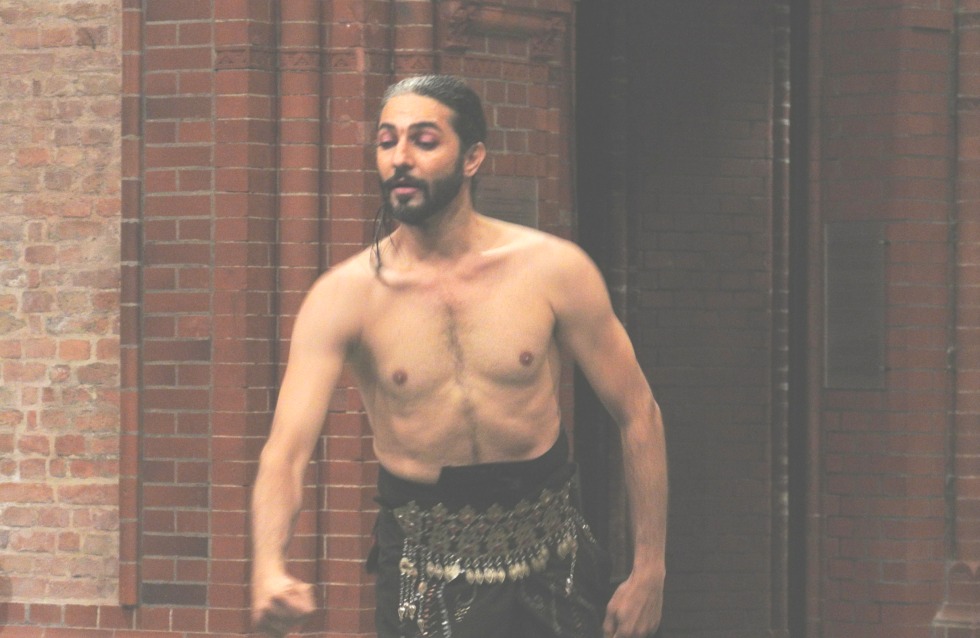
The mesmerizing performance and the unmistakable reflection of dervish whirling evoked Eastern myths, but mythology served Mr. Moshkin Ghalam to convey an artistic message rather than being used to evoke spirituality. If anyone hesitated, a circus trick of whirling around while balancing a glass of wine repelled the doubts. The gimmick: with increesing speed of spinning, wine surface was turning vertical while the dancer was tilting the glass into a horizontal position. As he slowed down, both wine and the glass returned to their original position. No droplet was spilled.
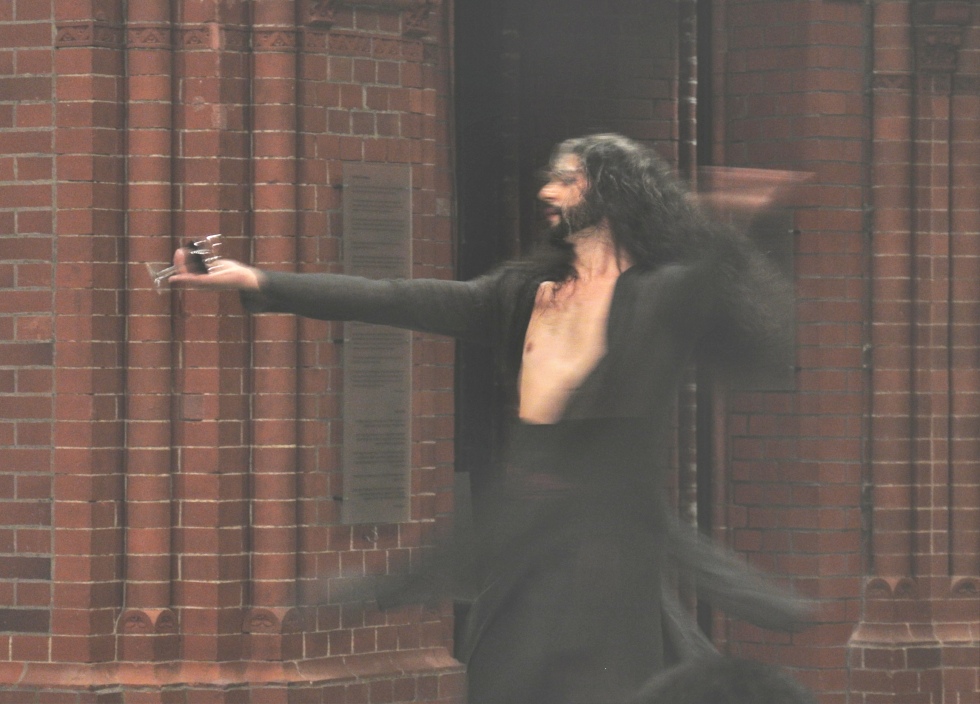
Persian drums have a beautiful sound. They can make an orchestra of their own. On the photo below, Behnan Samani plays Zarbang Udu, which is an instrument that he personally developed by adding a skin membrane and open holes to an African clay drum Udu. Today Zarbang Udu is manufactured by several companies and can be purchased on the internet. Reza Samani is playing Tombak, which is a traditional Persian drum made of wood. Tombak players use all fingers of both hands. The name of the drum stems from its major tones: the bass Tom played in the center of the head and the high-pitch Bak played on the rim. By varying the strikes, Tombat can produce diverse tones. Pressurizing the membrane with a hand makes it possibly to play tones of different pitch, extending over an octave. Tombak is the most popular drum in Iran but is seldom played in other contries. Many kinds of goblet drums similar to Tombat are used in Middle East and Africa. In the front we see Daf, which is played in Sufi rituals, but it is also used in popular and classical music in the entire Middle East.
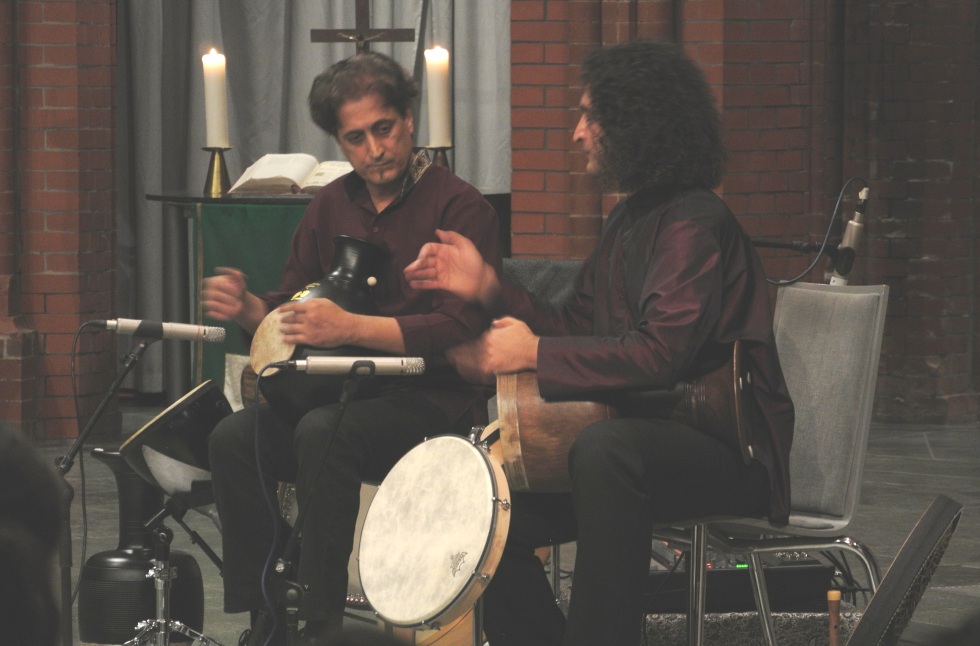
On the photo below, Reza Samani plays an ancient instrument surna (sorna). It is a double reed instrument resembling a horn played with both hands. Among European wind instruments, is the one that makes the most similar sound. The pipe and bell of this surna were made from a single piece of wood. Mr. Samani mastered circular breathing, allowing him to play long tones without interruption. He is also an accomplished player of Ney flute and other woodwind instruments.
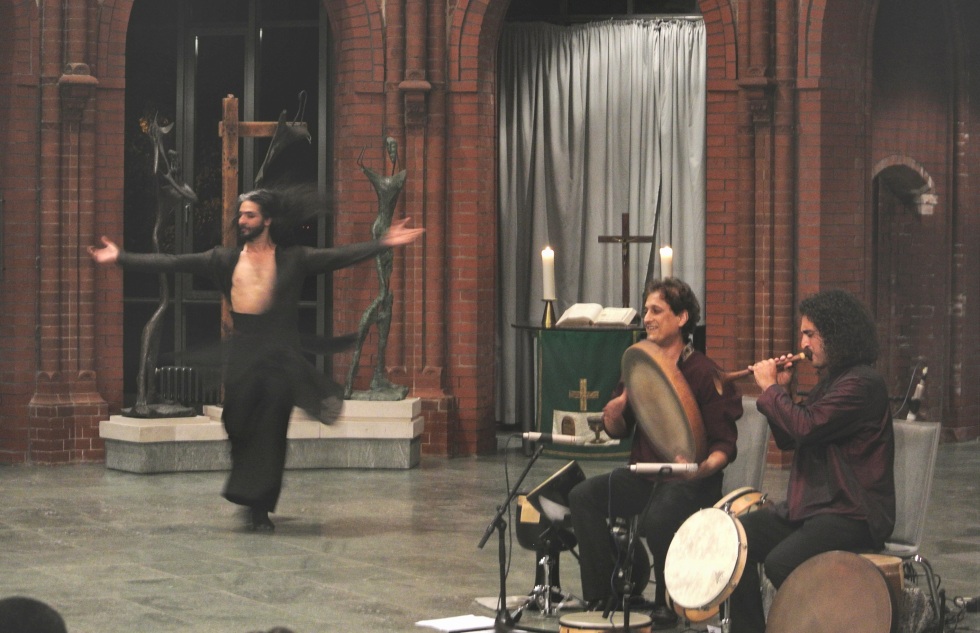
Petr Karlovsky